Generative AI has shaken up the world of content marketing. Teams are rewriting their playbooks and questioning long-held assumptions about what content is and how to produce it.
Some are integrating AI into their tech stack as fast as they can, while others are cautious and move slower. But almost everyone agrees that AI is here to stay.
To help you get more value out of AI, we’ve talked to folks who use gen AI daily for some hardwon insights:
Nadia Mykhalevych, senior content marketing lead at Preply
Lauren Funaro, content marketing manager at Freed
Alex Lindley, managing editor at Semrush
Andreea Ștefan, SEO lead at Planable
Gareth Davies, product and content marketing lead at KNIME
Here’s what we’ve learned — and what you need to know.
1. Bet on Quality But Know It’s Not Always Algorithm-Proof
High-quality, original content is your best chance to stand out from AI-generated noise — but that doesn’t mean algorithms will always reward your efforts.
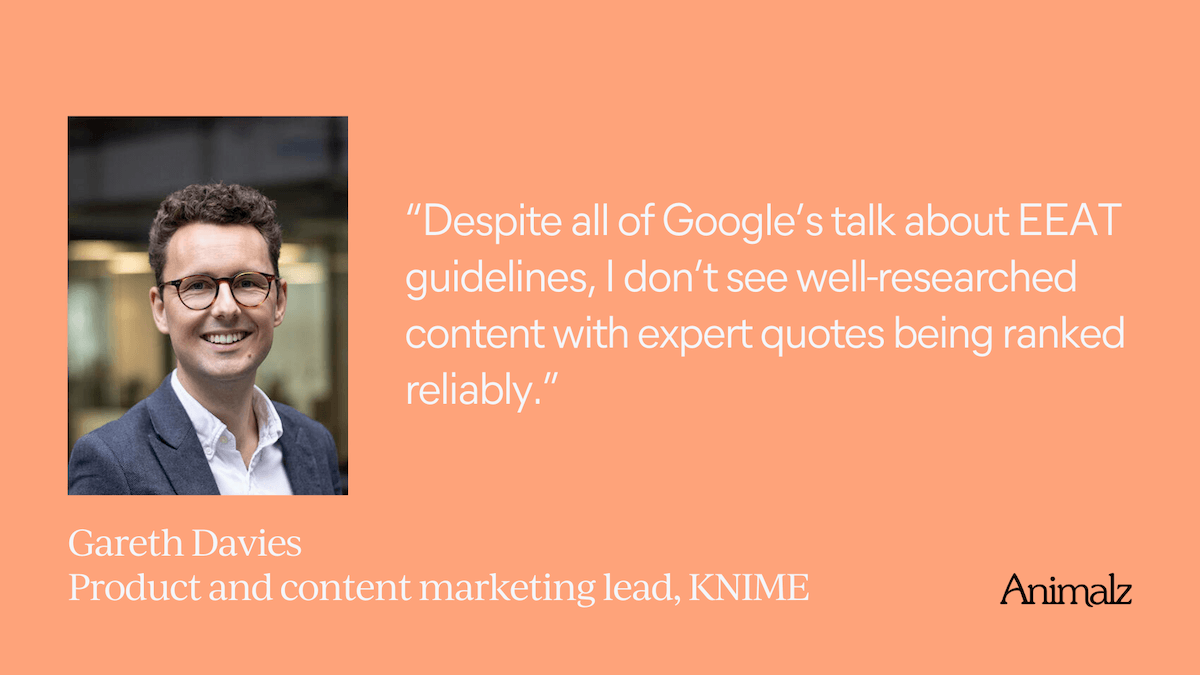
Gareth says that despite Google claiming to value authoritative content, he doesn’t “see well-researched content with expert quotes being ranked reliably.” At KNIME, they’ve sometimes seen forum posts rank better, especially after Google adapted its algorithm to prioritize Reddit and similar forum-like sources last year.
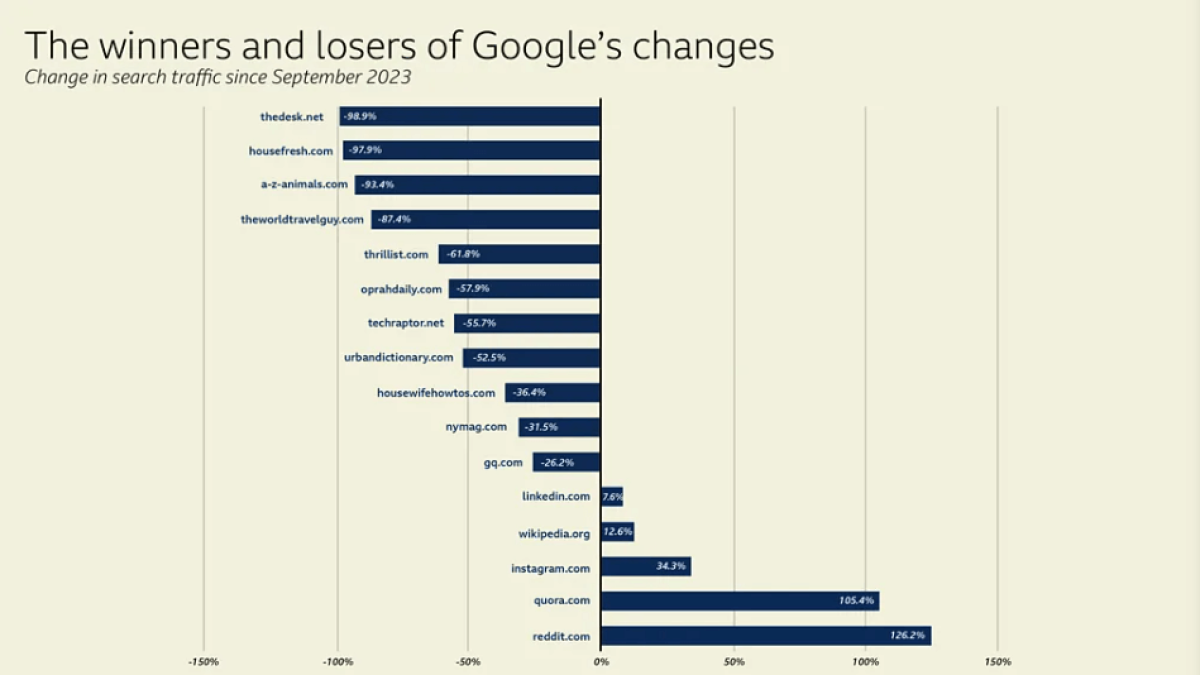
Google’s core updates throughout 2023 and 2024 have hurt the traffic of many smaller sites. Despite publishing content written from first-hand experience, many of these sites lost keyword rankings to Reddit, Quora, and other big sites.
Still, Gareth advocates that brands make time for speaking with subject matter experts to differentiate their content. Quality content remains a vital SEO moat despite algorithmic uncertainties.
Andreea and her team also avoid creating basic content. Instead, they turn to experts and proprietary data to elevate their content assets.
This approach aligns with the theory of “information gain.” It’s a concept mentioned in one of Google’s patents that measures the new information your article provides compared to the information present in other pieces on the same topic. The more new and relevant information you provide, the better your content should be.
Alex Lindley from Semrush also thinks about content quality through this lens. He explains that information gain is “likely to become even more important in SEO content over time, which is why we’re doubling down on it and even seeking additional experts who can help us optimize new and existing content for greater information gain.”
2. Double Down on Editing
AI content carries various risks. It can make up quotes, produce data that doesn’t exist, and much more. These “hallucinations” mean that fact-checking, editing, and copyediting of AI-generated content is critical.
You also need to work hard to keep AI on brand. This is tricky with algorithmic output that tends to be verbose and filled with formulaic sentences. Not to mention words like “delve”, “furthermore”, “digital landscape”, and others that have become hallmarks of AI content.

None of these issues are unsolvable. Editors and better prompting can help you create content that is worth publishing.
3. Exchange Repetitive Tasks For Deep Work
AI frees up time by handling routine tasks. This gives you more space for deep work to focus on more complex tasks like strategy and creative problem-solving.
Andreea Ștefan, SEO lead at Planable, continuously refines her ChatGPT prompts and looks for tasks that AI could automate. She says her team “sped up image alt text production and internal linking tenfold”. They also have GPTs to create first drafts of article briefs. These are “then checked by the content team, enriched with images, videos, and quotes before they’re sent to writers,” explains Andrea.
We use AI in a similar way at Animalz. Anthropic’s Claude model automatically summarizes our meetings. Highlights, decisions, and follow-up actions drop into attendees’ inboxes almost as soon as a meeting finishes.
Similarly, all drafts go through a QA check built on our internal guidelines and standards. This first, automated check gives our writers a chance to make improvements before a human editor gets involved. This in turn allows the editor to focus on more high-level strategies and quality issues a piece might have, instead of worrying about obvious and mundane mistakes.
Examples like these illustrate the extra time AI can create, giving your team more bandwidth to accelerate growth. Instead of being swamped with day-to-day tedious tasks, marketers can take a step back and develop more strategic ideas that truly move the revenue needle.
4. Use AI To Elevate, Not Replace Writers
AI can elevate human creativity, not replace it. You’ll still need great marketers and writers on your team, but AI can help them create better content and move faster.

Tools are one way in which AI can do this, for example:
Letterdrop and Clearscope can help you SEO-optimize your briefs, outlines, and articles.
ChatGPT and Claude can assist with brainstorming new ideas. They can also help with extracting useful insights from data sets and bodies of content.
Perplexity is an amazing research assistant that can save you hours of work each week.
Image generators like DALL·E, Midjourney, and OpenArt can create decorative visuals for your content.
AI is also effective at improving content at the sentence and paragraph level. Gareth Davies, product and content marketing lead at KNIME, uses AI to:
Come up with analogies for complex topics
Critique first drafts and article flow
Identify flaws in arguments
Analyze a headline and meta description and suggest alternatives
Draft concise definitions of things
Understand personas better
But there is such a thing as too much AI elevation. When you start to rely on AI for all the hard thinking and let it kick off your creative processes, you’ll quickly fall for the AI Dependency Spiral.

That’s why we always recommend not to let AI fill your blank page. Instead, force yourself to spend some time without AI to come up with some initial ideas. Only after you’ve done that you can call in the algorithms.
5. Create Workflows and Templates to Move Faster
AI can help you move faster. Lauren Funaro, for instance, has “used AI to supplement our internal operations. It’s helped us templatize content briefs, build outlines, and sometimes even create an initial draft.”
You’ll have to document workflows and templates to ensure speed doesn’t come at the cost of quality. Without such documentation, everyone will use AI differently, and mistakes and inconsistencies will multiply at AI speed.
Each part of content ops should have templates and documentation. Here are a few examples:
Templatized content briefs
Content outlining templates
AI content policy
Visual assets guidelines
Preply has gotten impressive results and savings from having clearly defined workflows that both in-house and freelance marketers follow.
Nadiia explains that the team “managed to reduce our spending by 30% in just six months while increasing our production scope, all without scaling our in-house team of three people. Currently, we produce, optimize, and localize around 150 articles per quarter.” This enables the team to scale production without hurting content quality or breaking the budget.
6. Use Custom GPTs and Projects to Stay On-Brand (or Purposely Go Off-Brand)
AI prompts tailored to your brand voice ensure consistency across AI-assisted content creation. One way to do this is to feed your tone and voice guide, product details, audience information, and other documents to AI each time you generate content.
A more sophisticated and structured approach is to use custom GPTs with ChatGPT or Projects in Claude. These features allow you to upload materials that the AI will always consider when generating a response. That way, AI-generated content will stay on-brand.
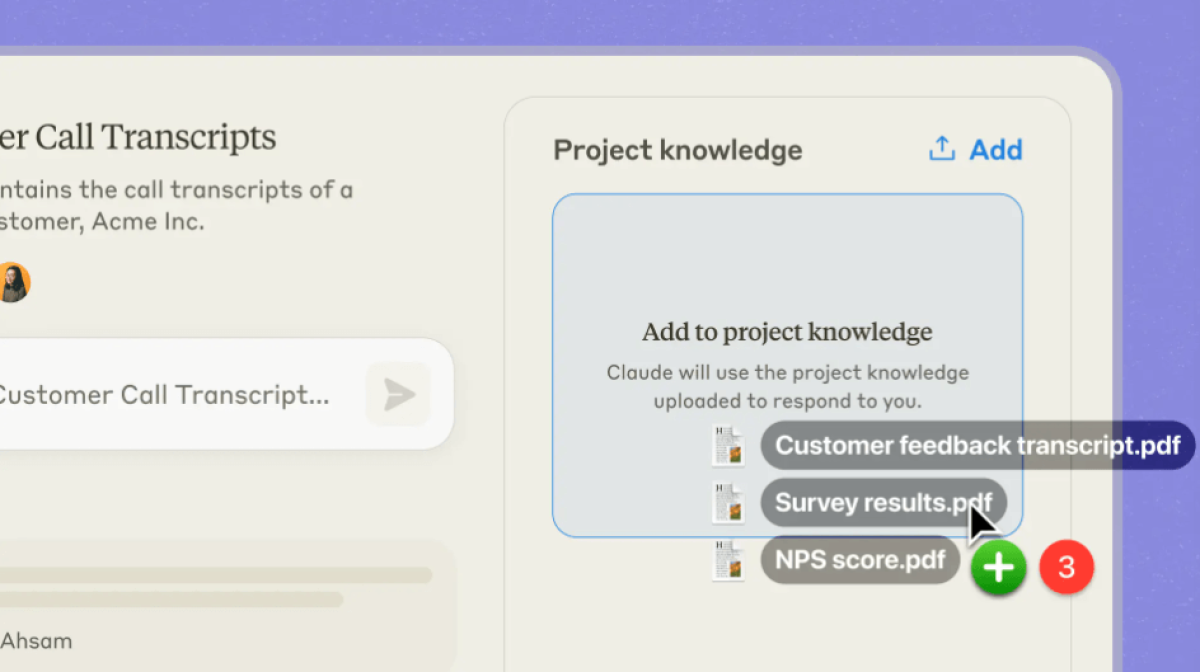
Gareth predicts “more marketing teams investing in building custom GPTs that are trained extensively on a company’s style guide, taglines, and content.” Some of this will happen in-house, but he thinks many companies will ”go to dedicated tool providers like Writer.com that enable you to easily scale this across your company.”
Strange as it may sound, we simultaneously expect a trend in the opposite direction: brands loosening their enforcement of tone and voice consistency. AI has the potential to make all communication flawless and on-brand; breaking the rules and making the occasional mistake might just help your content stand out or at least signal human authorship.
7. Diversify Your Content Bets to Reduce Risk
Google’s AI Overview, ChatGPT, and other AI tools are particularly good at answering informational queries, reducing the need for people to go through the search results. This may translate into fewer site visits to top-of-the-funnel (TOFU) content. Diversifying your assets can help maintain visibility and engagement.
Lauren is well aware of the importance of content diversification. She says her team has been focused on “creating different types of content, and are creatively optimizing our individual pages to gain more real estate on the SERP. For example, it’s more important than ever to include FAQs to capture the ‘People Also Ask’ section, and to add images to your page.”
Animalz has also helped clients diversify their content bets to reduce risk. For example, we worked with SupportLogic to create an AI-proof content strategy. We produced content across the funnel, ranging from TOFU customer service checklists to bottom-of-the-funnel (BOFU) comparison pieces. We even diversified content within the same funnel bucket. That way, even if AI reduces visits to some parts of SupportLogic’s content library, other parts will continue driving traffic.
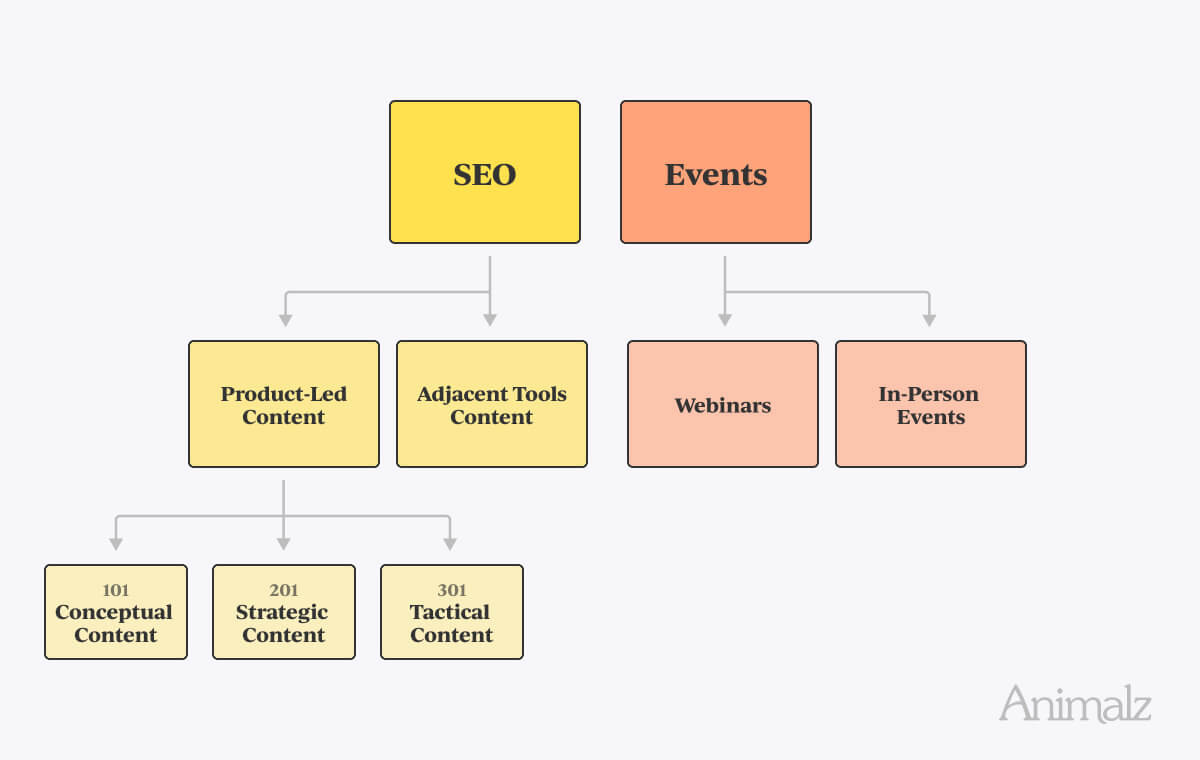
While you should be skeptical about folks who claim that SEO is dead, you should reserve the same skepticism for those who say nothing will change because of AI. At this point, nobody can really be certain about which content marketing playbooks will hold and which won’t in the next few years.
Two practices become even more important in the face of such uncertainty:
Think distribution-first. You can no longer assume that SEO is your best bet. It might be, but you’ll only know after analyzing all channels available to you and their potential impact.
Take it one channel at a time. Whichever channel you go after, you should only add a new channel to your content program once you’ve made sure you’re ready for an additional challenge.
Build an AI Strategy Because AI is Here to Stay
If there’s one thing that all these insights make clear, it’s that AI is changing how content teams work. It will be hard — if not impossible — to ignore these developments without falling behind.
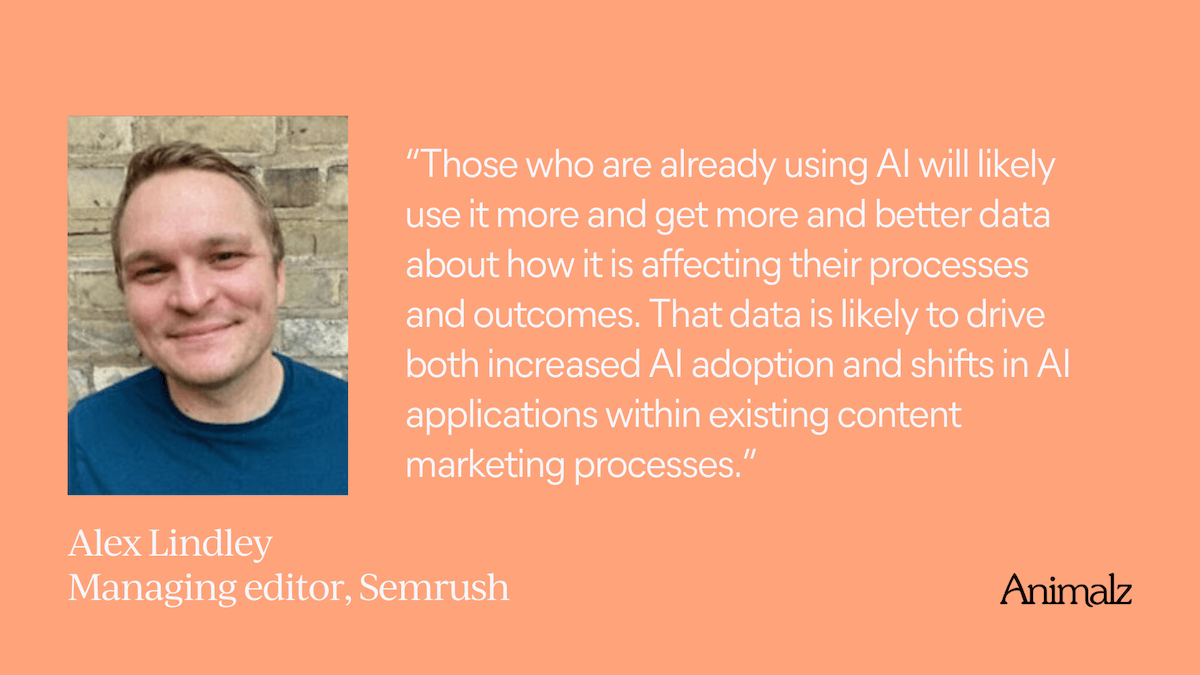
But letting everyone on the team use AI in ad-hoc ways isn’t enough. As Gareth points out: “I see a lot of marketers using GenAI in an isolated way. I haven’t heard of a single marketing team that has defined a GenAI strategy. I expect to see more companies – including our own – setting a clear strategy for how we will use this technology and what applications we rule in and out based on impact and risk.”
You need an AI strategy sooner rather than later. We hope the insights we shared in this article inspire you to start today.
